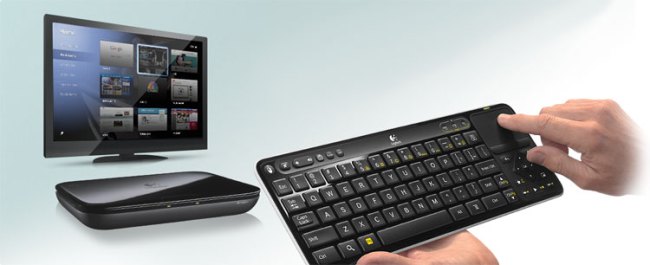
As someone who browses with Google Chrome, taps out articles on Google Docs, and watches television exclusively through the Internet these days (also known as “one of those stingy bastards”), I observed the launch of Google TV like the free healthcare crowd watched Obama back in 2008. And now I’m just as disillusioned.
After dabbling hopefully with the Logitech Revue for a few weeks, I’ve come to that sad conclusion that Google TV, in its current form, just isn’t going to cut it for most TV viewers. Here’s why.
 The interface is still a mess.
The interface is still a mess.
When I sit down to watch TV, I want a remote in one hand, and preferably, a beer in the other. A keyboard in the lap will never be part of the equation. While Sony’s Internet TV controller manages to cram a QWERTY keyboard into a much smaller, handheld controller, the whole interface still relies on controlling a cursor for basic operations like making video full screen. Frankly, if I wanted this much controller baggage with my TV experience, I would just use a computer.
Content providers aren’t on board.
Google has had a lot of doors slamming in its face lately. Like the door to ABC. And NBC. And CBS. And Fox. Meanwhile, customers are left wondering what exactly they’re supposed to watch with the magic box.
Even if Google manages to make amends and win back the hearts of the big networks, the fragility of the arrangement has been exposed. Owners will always know their favorite content could disappear on a whim when one of the network heads gets catty. The only acceptable solution is a technical workaround that gives the finger to stations by making Google TV identical to a TV in the eyes of networks and prevents them from blocking it.
 It piggybacks on cable boxes, rather than replacing them.
It piggybacks on cable boxes, rather than replacing them.
Internet TV has come a long way in the past few years, but it’s still a supplement for heavy media consumers, not a replacement. Google recognized this, but copped out by acting a pass-through for existing cable boxes, rather than building that functionality in. Want to record live TV? You’ll need another box. Want to watch over-the-air TV? You’ll need another box.
Besides the financial burden of relying on outside hardware (which often has to be leased), the lack of a built-in tuner will ultimately limit the level of interaction Google can provide with that content. It can send a fast-forward command to your DVR, for instance, but Google TV could never improve that experience with something like automated chapters, or the ability to search subtitles.
It’s still glitchy.
Google TV is a set-top box with the reliability of a desktop computer, which is to say, not that great. Sometimes black screens pop up where video should go. Sometimes video stalls or stutters. Sometimes it just doesn’t work with some content.
We wouldn’t go so far as to say these problems are chronic, but it has a ways to go before it becomes rock stable — which is what any viable TV platform needs to be. Interruptions when you’re trying to catch up on e-mail are frustrating. Interruptions in the middle of a Sons of Anarchy motorcycle chase or the last 30 seconds of a tied football game are maddening.
 Universal search isn’t universal.
Universal search isn’t universal.
The fragmented nature of Internet content pretty much demands Google-caliber search. The same episode of a TV show might be available on Hulu, SouthParkStudios, as a file on a networked computer, and on subscription services like Netflix.
But Google hasn’t pulled it off yet. Search on the first iteration of Google TV leaves out files on network drives unless you specifically tell it to search only them, and leaves out Netflix, too. Until Google TV can truly pinpoint all potential sources of content with a single search box, like, you know, Google, finding shows to watch remains very difficult.
Editors' Recommendations
- Spellcheckers in Google Chrome could expose your passwords
- Google Chrome extensions are failing, and $8,000 is on the table for a fix
- 3 reasons why Microsoft Edge is better than Google Chrome
- A zero-day Google Chrome security flaw requires you to update now
- 7 things you didn’t know you could do in Google Chrome





